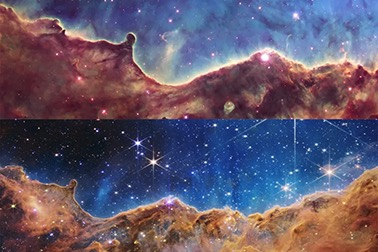Star Search
November 2022

I’m still waiting for NASA to name a telescope for Hubble’s fellow Missourian, Harlow Shapley.
Unless you’re a rocket scientist, you may not have heard of Harlow Shapley. But Albert Einstein knew him. And so did fellow Missourian Edwin Hubble.
Indeed, this Mizzou grad and stargazer should be in the Hall of Great Americans. Alas, he’s not even a footnote on the website for Mizzou’s Department of Physics and Astronomy.
Shapley almost missed his calling altogether. He wanted to be a journalist. That’s why he came to Mizzou. But he was ahead of his time.
He worked as a reporter even before he finished high school. Arriving at the University of Missouri in 1907, he planned to apply the next year to study journalism. But when he found out that the world’s first J-school had been delayed for a year, he picked another major. As a fledgling reporter, he must have begun looking at the course guide in alphabetical order, because his biography states that he almost decided to major in archeology, but finally settled on astronomy.
That turned out to be one giant leap for mankind, in terms of understanding our place in the universe. Harlow’s study of the speed of light illuminated the theory that Earth and its solar system are not in the center of the universe. In fact, according to Harlow, we’re nowhere near the center of the universe, which is much bigger than anybody thought. This monumental discovery shook the foundations of belief unlike anything since Copernicus, who proved that the sun—not Earth—is the center of our solar system. It was a dangerous belief to promote back in 1543, and Copernicus began his report by predicting his revelations would cause heartburn. Harlow Shapley’s discovery was every bit as unsettling.
Harlow’s resolve and determination were early indications that he later would stand firm in his discoveries, even against popular opinion. He didn’t attack religion any more than Copernicus did. But his discovery suggested that the Earth was not placed in the center of the universe. He suggested that the Milky Way, alone, contains a hundred thousand million opportunities for life. He knew it would cause a great philosophical debate when his scientific discoveries collided with Genesis and miracles, mysticism and the supernatural. That was not his intent. He just discovered the size of the Milky Way and the fact that Sagittarius, not our sun, is at its center.
Somewhere in the galaxy, Copernicus is smiling.
Harlow Shapley is just one of the surprising characters in John Robinson’s first book, A Road Trip Into America’s Hidden Heart.
